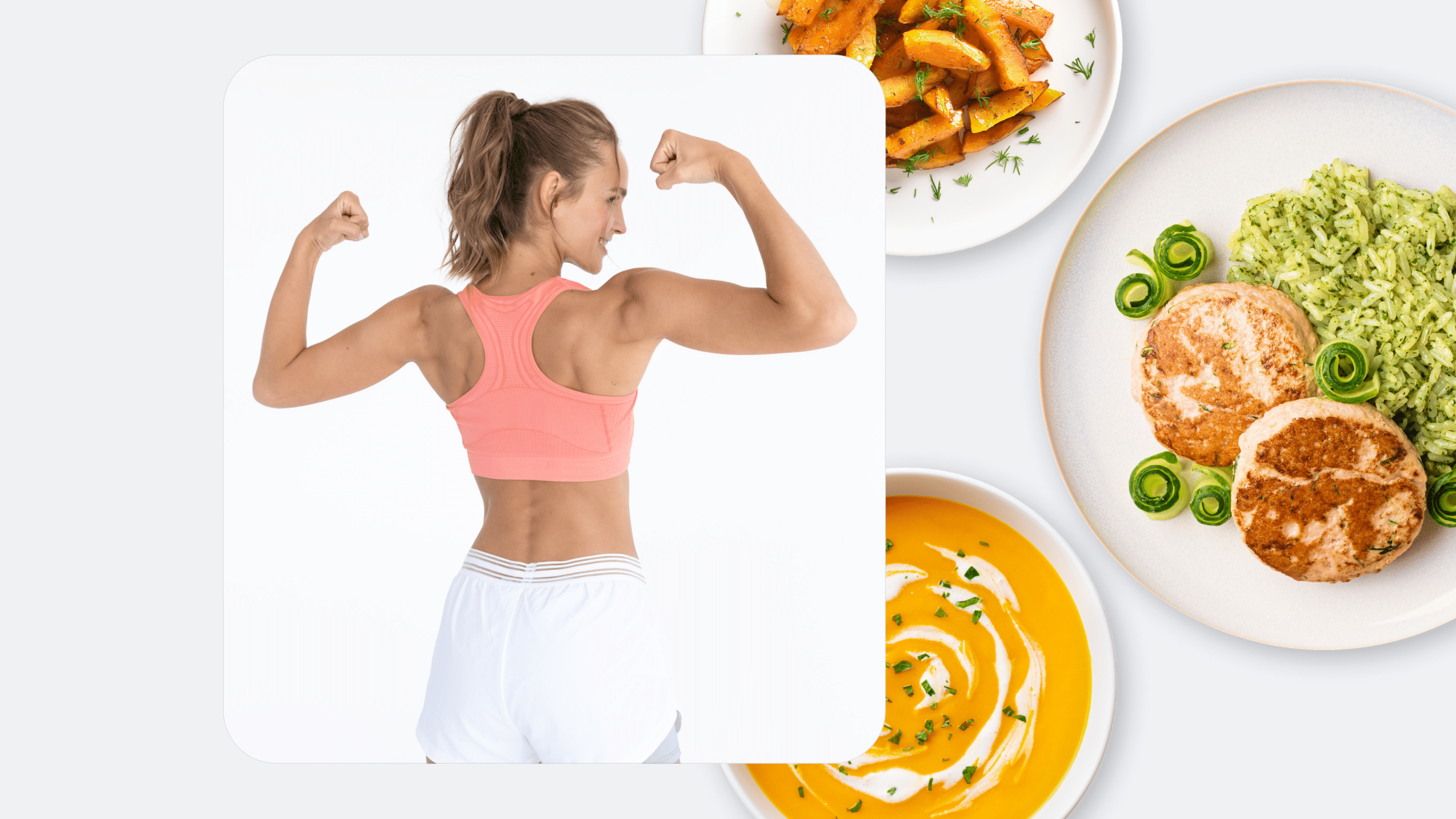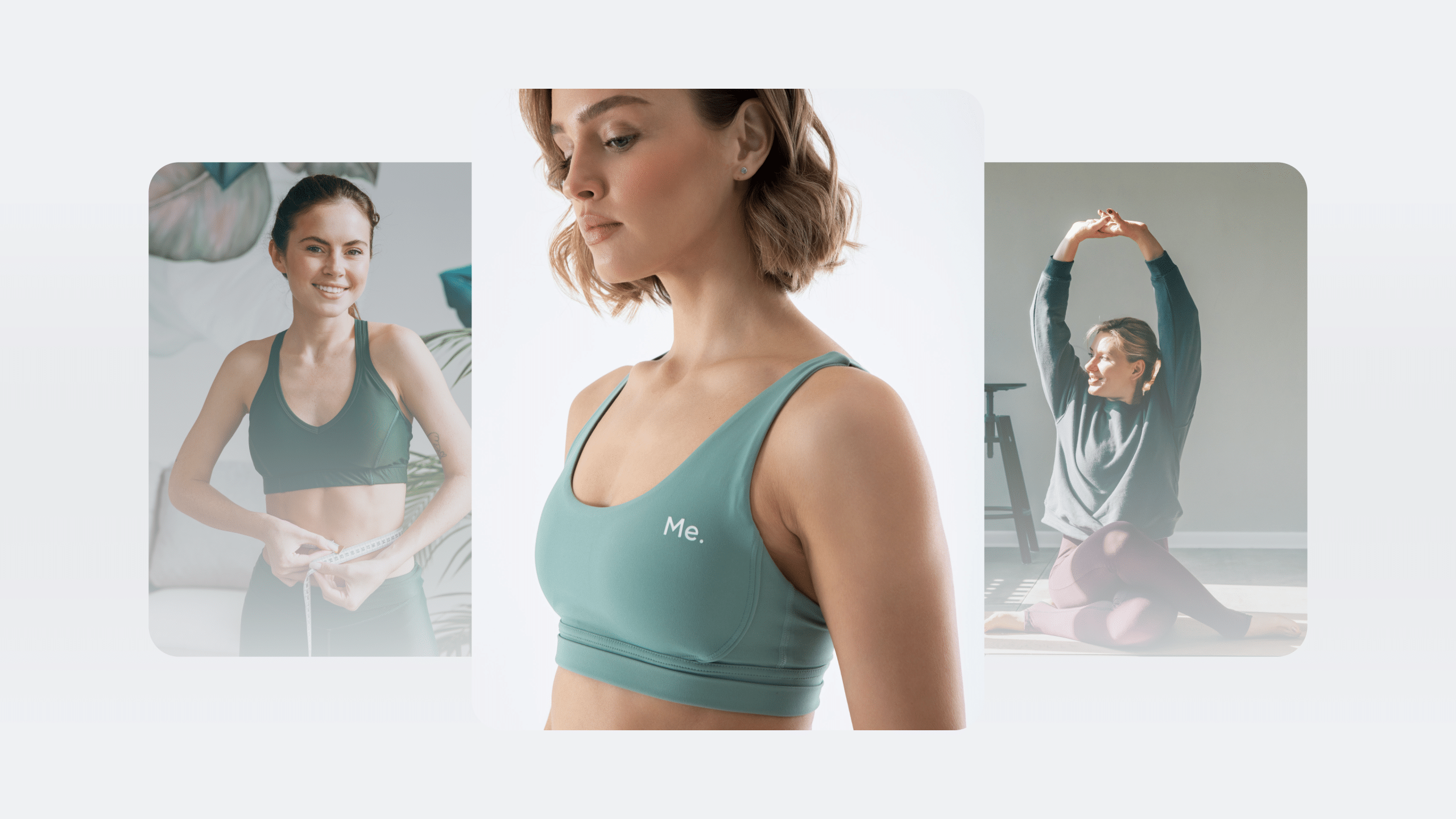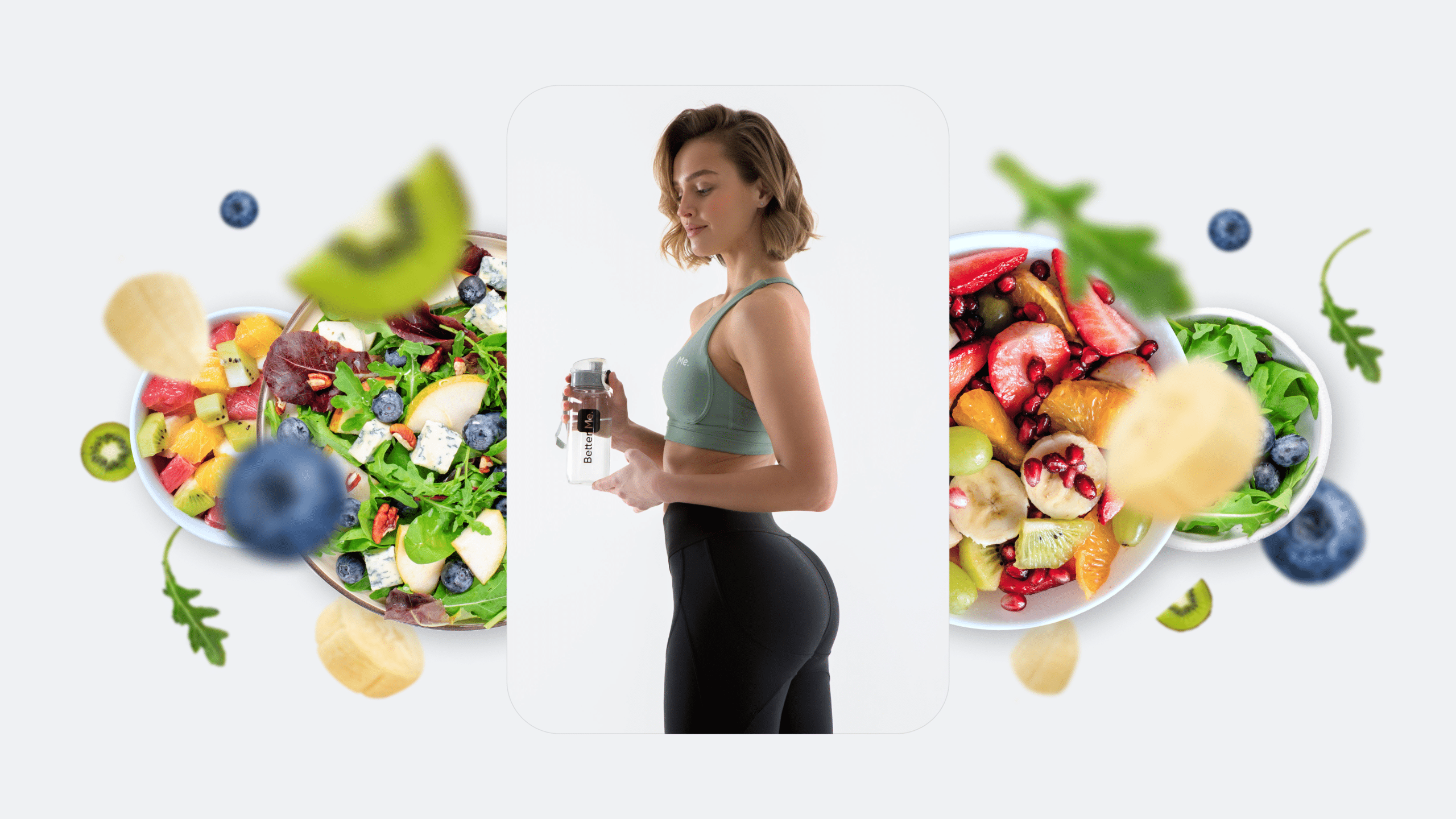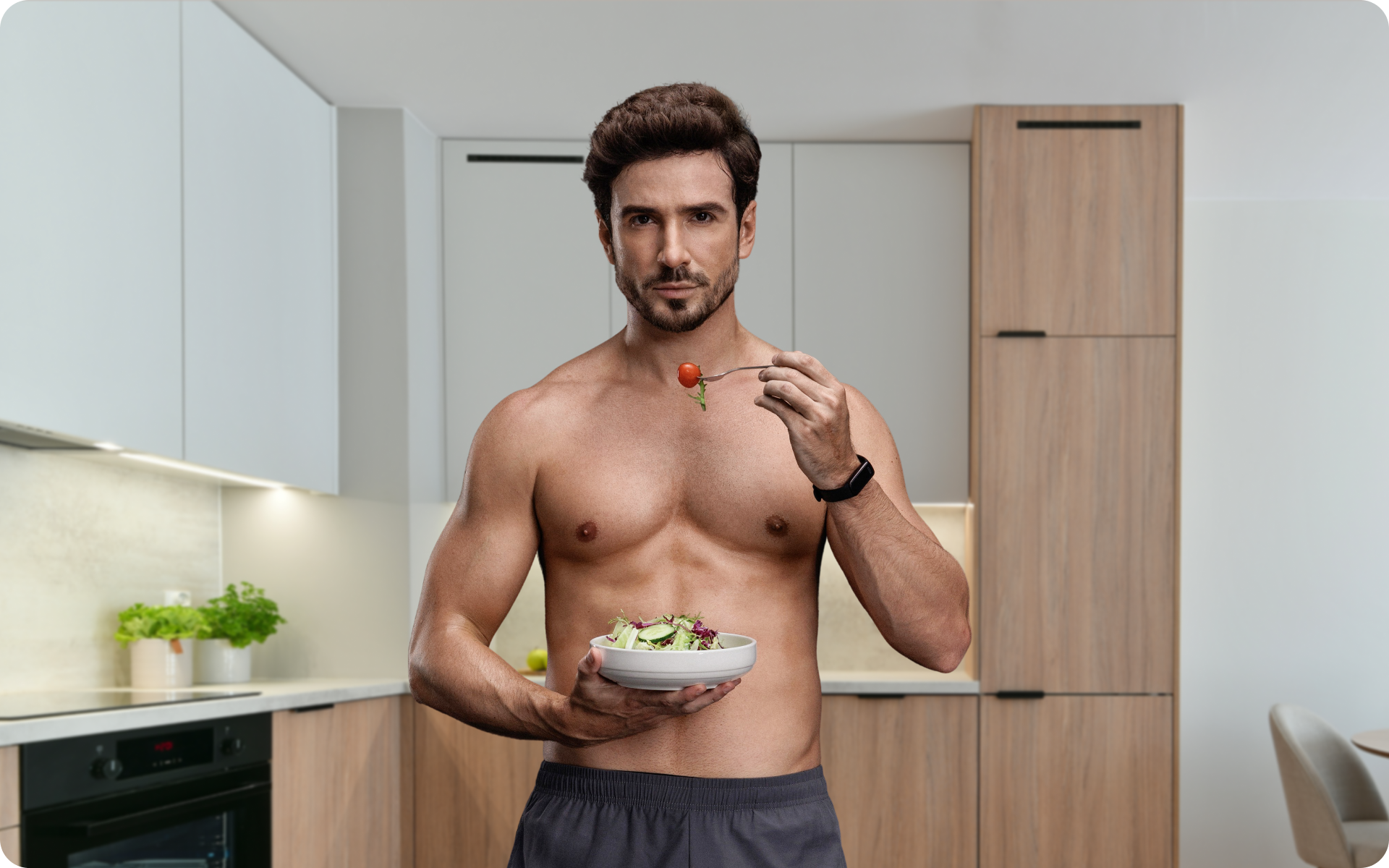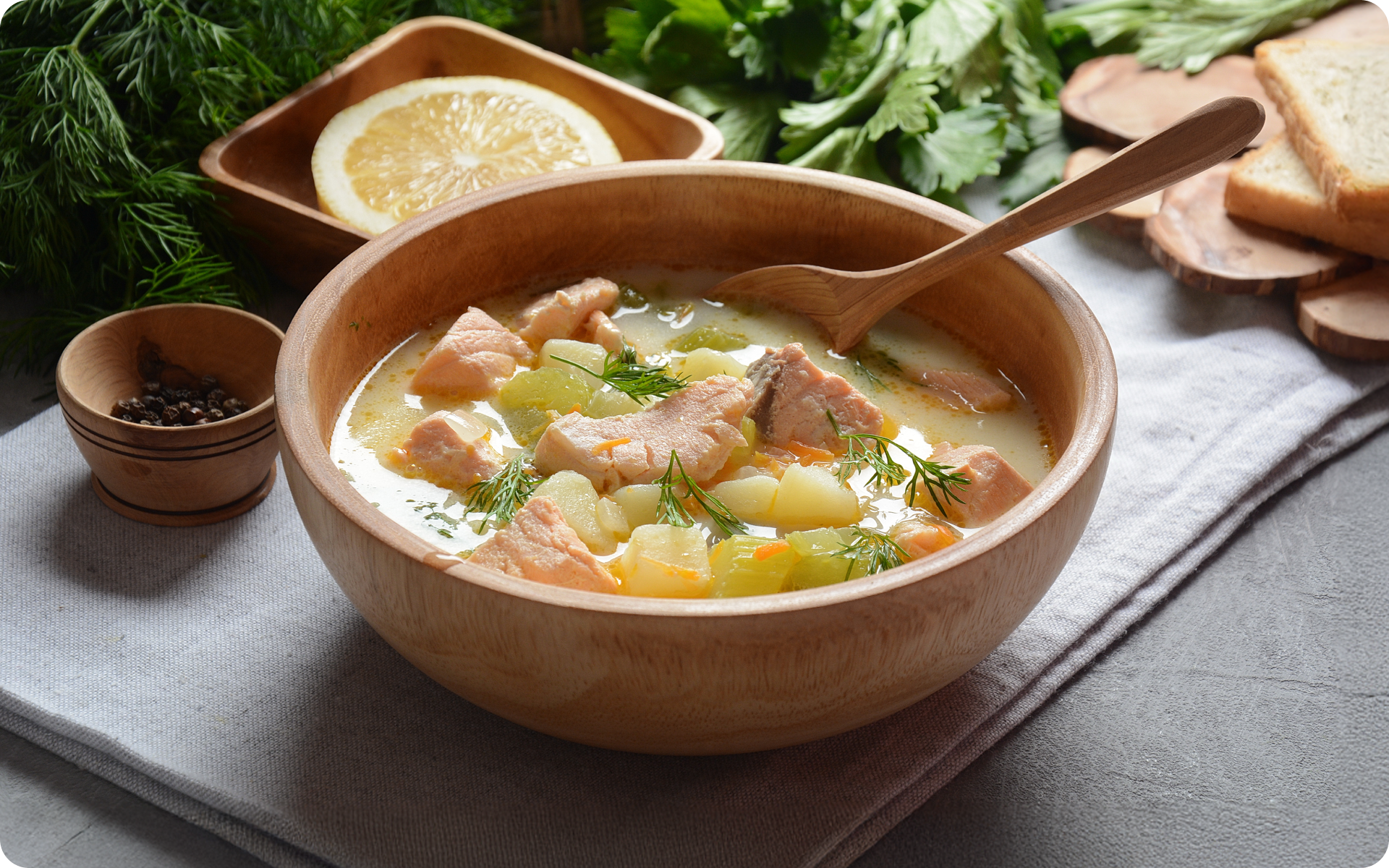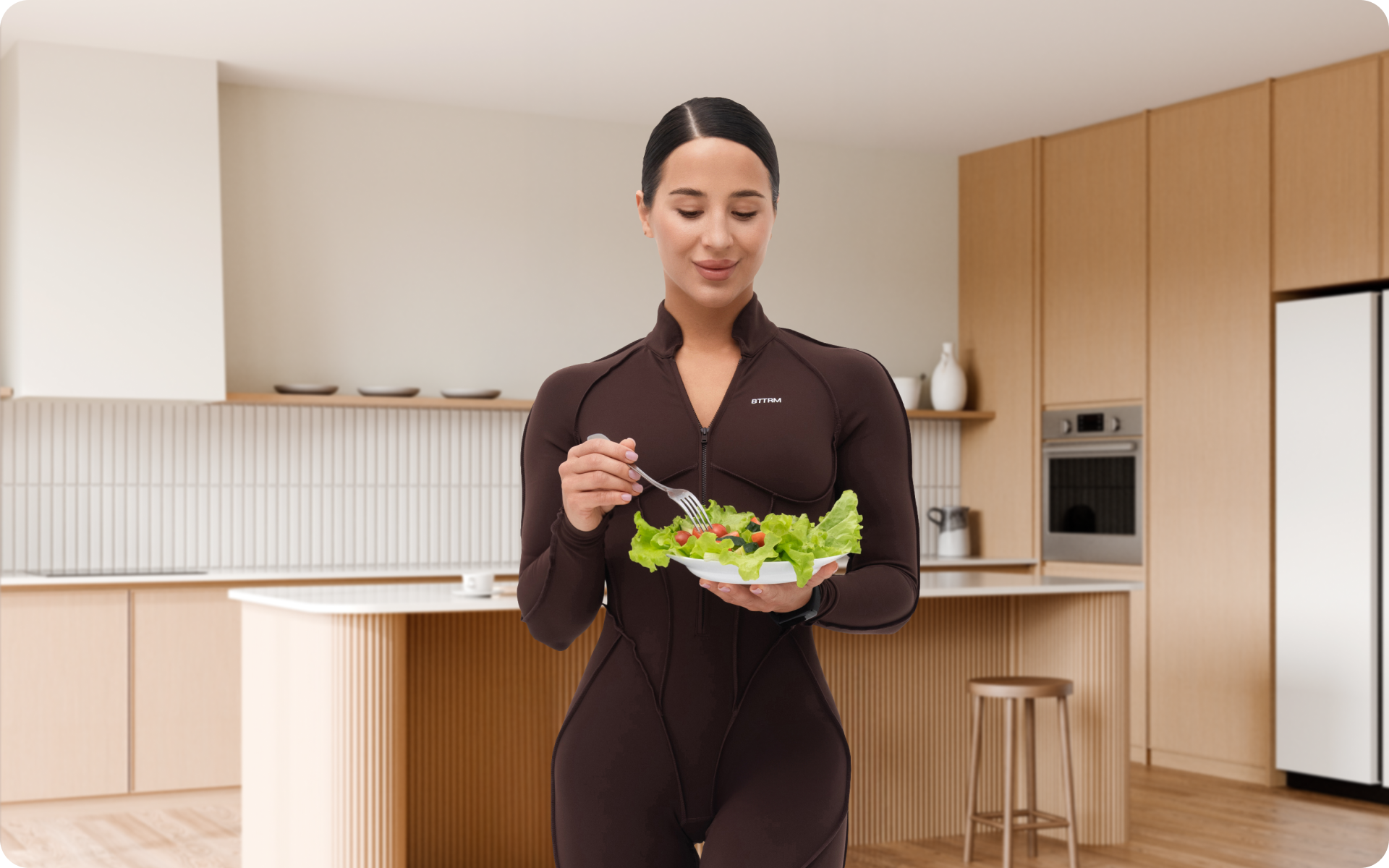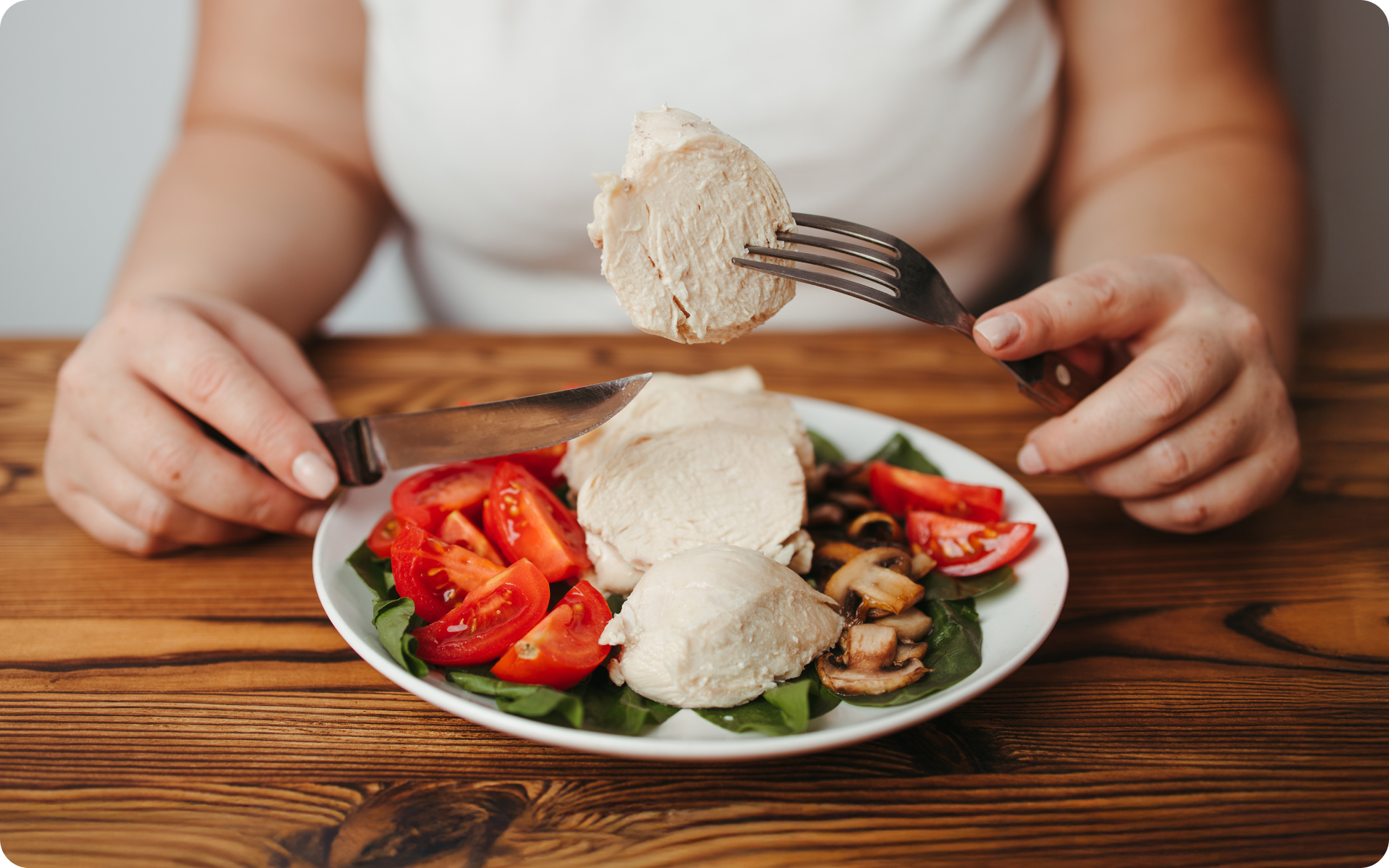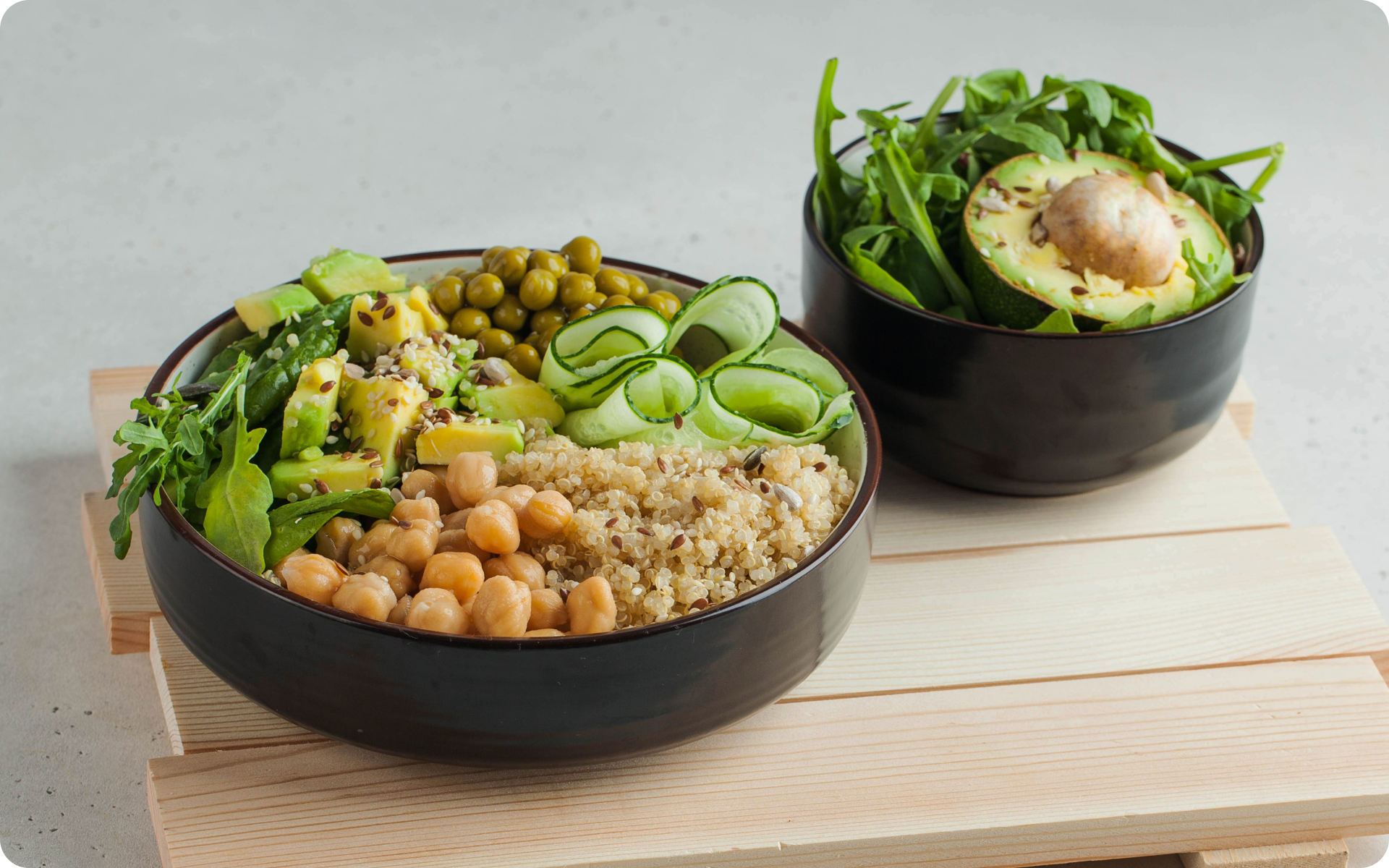Why do you need a 5,000-calorie diet?
Normally, when you hear the word diet, the first thing that pops into your head is weight loss. For years, the media and public figures have used it in the context of slimming down, but dieting can also be geared toward weight gain, which is precisely the main goal of a 5,000-calorie diet. This diet is designed for those who want to gain muscle mass, generally athletes.
The motto of this diet is if you eat a lot, you gain a lot. In other words, if you want to increase your muscle mass, you will need to increase the amount of calories you eat. If you eat insufficient calories, you will either remain in your current weight category or shed even more pounds. And this is not what bodybuilders aspire to.
What can you eat on a 5,000-calorie diet?
Eating 5,000 calories a day does not mean you can eat whatever you want without facing the consequences. On a 5,000-calorie diet, you need to plan your meals thoroughly and make sure they’re nutritious enough. The rule of thumb is that your daily meal plan should consist of 15-20% protein, 20-25% fats, and 60-65% carbohydrates (1).
Carbohydrates
There are three types of carbs: sugar, fiber, and starch.
Eating too much added sugar can lead to obesity, thereby lowering the health status of a nation (12). Refined sugars contain empty calories that add no nutritious value. Furthermore, overeating foods with a high glycemic index (GI) is linked to cancers, cardiovascular diseases, and diabetes (14). At the same time, naturally occurring sugars are less deleterious for your health, which is why it is recommended to substitute added sugars with them. However, eating an inadequate amount of “good” sugars can also be harmful to your body. Generally, your daily free sugar (white and brown sugar, honey, maple syrup, etc) intake should not exceed 30 grams (11).
Fiber is an essential part of a healthy diet as it offers your body several benefits. Firstly, fiber helps regulate bowel movements, which prevents constipation. Similarly, it is also important for maintaining gastrointestinal health, which can decrease the risk of colorectal cancer. Another benefit of a high-fiber diet is that it can lower your LDL cholesterol and blood sugar levels. In the long term, this can prevent type II diabetes and decrease inflammation and blood pressure (3). The daily norm of fiber should be approximately 30 grams, which you can get from whole grains, fruits and vegetables, wholemeal bread, and pulses (6).
Starchy foods, including complex carbohydrates, break down slowly when they are digested, which means they provide you with energy for lengthy periods. Starchy foods are also effective for curbing your appetite, which helps you to stay feeling full between meals. Foods such as legumes, fruits and vegetables, and whole grains are valuable starchy foods that you should consider eating every day. However, not all sources of starches are equally healthy and therefore, the consumption of processed foods and products made from white flour should be limited. Refined products include pasta, cornflakes, and cookies (10).
On a 5,000-calorie diet, you should generally follow the aforementioned guidelines regarding your daily intake of carbs and the GI of the foods. White sugar and white flour, both of which have a high GI, will not contribute to a healthy weight gain (5).
Yanking yourself back in shape has never been so easy with our game-changing fitness app! Start transforming your life with BetterMe!
Fats
Fats are responsible for cell communication and signaling, vitamin absorption, and the optimal hormonal environment in the body (9). In addition, this macronutrient contains essential fatty acids, which the body cannot produce on its own (4).
The three types of fats are saturated, unsaturated, and trans.
Saturated fats facilitate hormone production in your body. These are particularly important for men, as eating foods that are high in saturated fats contributes to testosterone production (7). At the same time, ingesting too much saturated fat is likely to increase the LDL “bad” cholesterol levels in your body, which can cause cardiovascular diseases. Men should consume no more than 30 grams of saturated fats a day, while the daily intake for women should be no more than 20 grams as many people already eat too much saturated fat in their regular diet (4).
Unsaturated fats, which can be monounsaturated and polyunsaturated, are the healthiest as they can lower the risk of cardiovascular diseases and decrease LDL cholesterol levels. Unsaturated fats can be found in oils, avocados, some nuts, and oily fish. Polyunsaturated fats are further subdivided into omega-3, which can be found in vegetable oils, and omega-6, which can be found in oily fish (4).
Trans fats are classified as the least healthy fats as they increase the levels of LDL bad cholesterol and have an inauspicious effect on metabolism (4, 9). They can be found in small amounts in dairy and meat. It is recommended to restrict your daily intake of trans fats to 5 grams (4). Make sure you always read nutrition labels to avoid added trans fat in the products you buy in the store.
On a 5,000-calorie diet, you should restrict your fat consumption to unsaturated fats as they are rich in vitamin A. This could increase skin elasticity, which is important for normal and aesthetic muscle growth. In addition, unsaturated fats are rich in antioxidants (5).
Read more: 7-Day Weight Loss Low-Carb Diet: Choose High-Protein, High-Fiber, or Ultra-Low-Carb
Protein
Protein is an integral part of any athlete’s meal plan. It contains essential amino acids that facilitate muscle recovery and growth (9). If you follow a 5,000-calorie diet, you should eat lean meat as a protein source containing all the essential amino acids. Conversely, plant-based foods do not have all of these, which is why they cannot substitute meat completely. Lean meats include fish, poultry, and steaks, which you should eat every day. You should always try to avoid eating any visible fat. Eggs are another valuable source of healthy protein, an abundance of which is in its white. If you are a vegetarian or vegan but still need to receive all the crucial amino acids for your 5,000-calorie diet, you should increase your wild rice and legume intake (5).
If you wish to cinch your waist, tone up your bat wings, blast away the muffin top – our fitness app was created to cater to all your needs! BetterMe won’t give excess weight a chance!
A 5,000-Calorie Diet for Non-Athletes
A 5,000-calorie diet is designed specifically for athletes and bodybuilders as they burn a significant amount of energy during their daily training sessions and need to replenish it promptly and efficiently. Normally, adult women need to eat 1,600-2,400 calories a day, while the total is 2,000-3,000 calories for men (2). In order for an athlete to gain muscle mass, it’s important to eat more calories than they burn. However, non-athletes do not burn as many calories to justify a 5,000-calorie diet. It may put your body under stress and lead to fast and unhealthy weight gain, with other health problems ensuing. Therefore, if you are not an athlete but still want to try a 5,000-calorie diet, you should do it only under the supervision of a health professional (5).
FAQs
What happens if you eat 5,000 calories in one day?
Eating more than 5,000 calories in a day is something that will most certainly lead to weight gain. However, your physical activity will determine whether it’s a healthy weight gain or an unhealthy one. For athletes or those who want to build muscles or are strength training, these calories will lead to a build-up of muscle mass. But for ordinary adults who do not have a routine of doing any strenuous physical activities, they may lead to unhealthy weight gain.
Is 5,000 calories a day hard?
Eating 5,000 calories a day is an unusually high number of calories. However, we can say that it is not too hard, as more calorie consumption simply means eating more. You just need to eat multiple times a day: three full proper meals and some snacks in between. You need to be careful that it is still a balanced diet with the right proportion of all types of nutrition. This is something that may prove to be tricky, but at the same time, an unbalanced diet would pose some serious problems to your health.
What if I eat 4,000 calories a day?
The number of calories needed in a day varies from person to person and is dependent on a variety of factors.
The Bottom Line
A 5,000-calorie diet is an unusual one as it focuses on weight gain rather than weight loss. It is designed for bodybuilders and athletes who need to build muscle mass. It can be overwhelming for the body, which is why thorough meal planning and medical supervision are essential. To create a meal plan for a 5,000-calorie diet, you need to follow this macros distribution: 15-20% protein, 20-25% fats, and 60-65% carbohydrates. You should always opt for fresh and whole food when it is available. Planning your meals according to this rule plays an important role in ensuring the healthiness and safety of the diet. Plan a meeting with a dietitian if you require more guidance regarding healthy diets related to muscle gain. If you are not a bodybuilder, you should either avoid the diet or do it under strict medical supervision.
DISCLAIMER:
This article is intended for general informational purposes only and does not serve to address individual circumstances. It is not a substitute for professional advice or help and should not be relied on for making any kind of decision-making. Any action taken as a direct or indirect result of the information in this article is entirely at your own risk and is your sole responsibility.
BetterMe, its content staff, and its medical advisors accept no responsibility for inaccuracies, errors, misstatements, inconsistencies, or omissions and specifically disclaim any liability, loss or risk, personal, professional or otherwise, which may be incurred as a consequence, directly or indirectly, of the use and/or application of any content.
You should always seek the advice of your physician or other qualified health provider with any questions you may have regarding a medical condition or your specific situation. Never disregard professional medical advice or delay seeking it because of BetterMe content. If you suspect or think you may have a medical emergency, call your doctor.
SOURCES:
- 5,000-Calorie Mass Diet (2020, livestrong.com)
- Appendix 2. Estimated Calorie Needs per Day, by Age, Sex, and Physical Activity Level (n.d., health.gov)
- Dietary fiber: Essential for a healthy diet (2018, mayoclinic.org)
- Fat: the facts (2020, nhs.uk)
- How to Create a 5,000-Calorie Diet (2018, livehealthy.chron.com)
- How to get more fibre into your diet (2018, nhs.uk)
- Here’s What Mark Zuckerberg’s 4000 Calories A Day Diet Can Do To Your Body (2023, healthline.com)
- How Much Fat Can You Gain In A Single Day Of Bingeing? (N.A, legionathletics.com)
- Macro Calculator – Build Better Nutrition With Your Macros (2020, bodybuilding.com)
- Starchy foods and carbohydrates (2020, nhs.uk)
- Sugar: the facts (2020, nhs.uk)
- The Dose Makes the Poison: Sugar and Obesity in the United States – a Review (2019, ncbi.nlm.nih.gov)
- The truth about carbs (2020, nhs.uk)
- Too much sugar, too much carbohydrate, or just too much? (2004, pubmed.ncbi.nlm.nih.gov)
- Why Is Starch Good for the Body? (n.d., livestrong.com)


